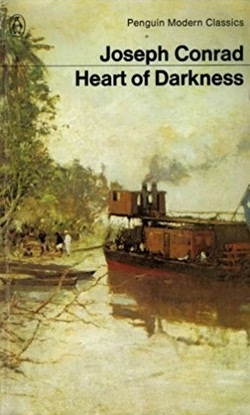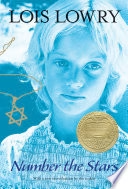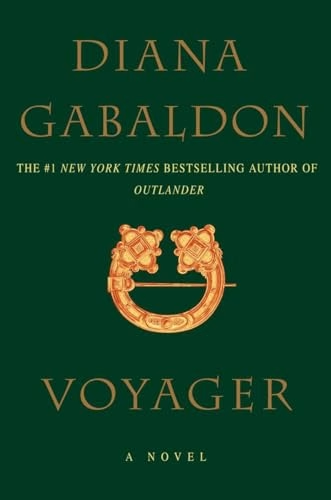Plot Summary
A Return to Scotland (1968)
The story opens in 1968, twenty years after Claire Randall has returned to her own time. Now a widowed surgeon, she travels to Scotland with her fiery, red-haired, twenty-year-old daughter, Brianna. They visit Inverness for the funeral of Reverend Reginald Wakefield, an old family friend. There, they connect with the Reverend’s adopted son, Roger MacKenzie, a young, charming Oxford historian.
Claire’s true purpose for the trip is to finally reveal a long-held secret to her daughter: the truth about her parentage. Brianna has grown up believing her father was Frank Randall, Claire’s first husband. Claire takes Brianna and a skeptical Roger to the ancient stone circle of Craigh na Dun. She recounts the unbelievable story of her journey through the stones into the 18th century, her marriage to a Scottish Highlander named James Fraser, and the fact that Jamie, not Frank, is Brianna’s biological father.
The narrative is framed by this 1968 timeline. The bulk of the novel is Claire’s telling of the events that transpired between 1744 and 1746, explaining why she left Jamie and returned to her own time.
In the Court of King Louis (Paris, 1744)
The main story flashes back to 1744. Following the traumatic events of the previous novel, Claire and Jamie Fraser have fled Scotland for France. Their primary mission is to prevent the disastrous Jacobite Rebellion. Knowing that the uprising will end in the slaughter of the Highland clans at the Battle of Culloden, they are determined to subvert the plans of its leader, Prince Charles Edward Stuart.
They find a home with Jamie’s cousin, Jared, a prosperous wine merchant. Jamie takes over management of the business, which gives him access to the French court and the Jacobite sympathizers who plot there. Claire, pregnant with their first child, finds purpose by volunteering at L’Hôpital des Anges, a charity hospital run by the formidable Mother Hildegarde.
Their life in Paris is a complex game of political maneuvering and espionage.
* Undermining the Prince: Jamie and Claire work to sabotage Prince Charles’s efforts to secure funding from the French King Louis XV. They portray him as an unstable and foolish leader, hoping to convince financiers that the rebellion is a poor investment.
* New Enemies and Allies: They make a dangerous enemy in the Comte St. Germain, a wealthy nobleman involved in occult circles, after Claire correctly diagnoses a smallpox outbreak on his ship, costing him a fortune. They also navigate a treacherous friendship with the Duke of Sandringham, whose loyalties are always questionable.
* The Shadow of Randall: The past re-emerges when they discover that their nemesis, Captain Jonathan “Black Jack” Randall, is not only alive but is also in Paris. This revelation horrifies Jamie and complicates Claire’s life, as she knows Randall’s survival is necessary to ensure the existence of her first husband, Frank. She makes Jamie swear to spare Randall’s life for one year, a promise that puts an immense strain on their relationship.
The situation culminates in disaster when Jamie discovers Randall brutally assaulting Fergus, their young French ward. Enraged, Jamie breaks his promise to Claire and challenges Randall to a duel. The duel leaves Randall severely wounded and Jamie imprisoned in the Bastille. The physical and emotional trauma of these events causes Claire to suffer a devastating miscarriage, losing their daughter, Faith. Claire is forced to bargain for Jamie’s freedom, which she secures by sleeping with King Louis XV.
The Return to Lallybroch (Scotland, 1745)
Broken by their loss and their failure in France, a pardoned Jamie and a recovering Claire return to Scotland with Fergus. They seek solace in the peaceful rhythm of life at Lallybroch, Jamie’s ancestral home. For a brief time, they find happiness with Jamie’s sister, Jenny, and her family.
However, their peace is short-lived. Their efforts in Paris were in vain. Prince Charles Stuart has landed in Scotland, and Jamie’s name has been forged on a document pledging his clan’s support to the Jacobite cause. Trapped by his honor and the Prince’s machinations, Jamie has no choice but to raise his men and join the rebellion he fought so hard to prevent.
The Jacobite Rising
Jamie Fraser, now a reluctant leader in the Jacobite army, distinguishes himself as a brilliant military strategist. Claire accompanies him, her 20th-century medical skills making her an invaluable asset as a battlefield healer.
The early stages of the rebellion are marked by surprising success:
* Prestonpans: The Highlanders achieve a stunning and decisive victory against the British army at the Battle of Prestonpans, a feat largely due to Jamie’s tactical advice.
* The March South: The Jacobite army marches into England, pushing as far south as Derby. Morale is high, and it seems that an attack on London might succeed.
However, the army is plagued by infighting and poor leadership. Prince Charles proves to be a vain and delusional commander, frequently ignoring the counsel of his experienced generals like Lord George Murray and Jamie. At Derby, just a few days’ march from a poorly defended London, the Prince yields to his advisors’ fears and makes the fatal decision to turn back. This marks the beginning of the end for the rebellion.
The Road to Culloden (1746)
The long, demoralizing retreat north during a harsh winter shatters the Jacobite army. Supplies dwindle, soldiers desert, and hope fades. Claire and Jamie grow increasingly desperate, knowing they are marching toward a predetermined slaughter on Culloden Moor.
They make one last, desperate attempt to change fate. Claire suggests poisoning the Prince, but they are stopped by Dougal MacKenzie, Jamie’s uncle and a fervent Jacobite, who overhears their plan. Enraged by what he perceives as treason, Dougal attacks them. In the ensuing struggle, Jamie is forced to kill his own uncle. Now a wanted murderer among his own people, Jamie knows there is no escape.
The Dragonfly in Amber (April 16, 1746)
On the morning of the Battle of Culloden, Jamie knows all is lost. The British army is well-fed and well-positioned, while the Highlanders are exhausted, starving, and outnumbered. His final act is one of ultimate sacrifice.
He takes Claire, who he has just discovered is pregnant again, to the stones at Craigh na Dun. He forces her to go back through the stones to the safety of the 20th century, where he knows Frank will take care of her and their child. Their goodbye is a heart-wrenching farewell between two people who know they will never see each other again. Jamie gives her his father’s dragonfly-in-amber wedding gift and tells her he will find her, even if he has to endure two hundred years of Purgatory. He then turns back to face the battle, intending to die on Culloden Moor.
A Revelation and a Promise (1968)
The narrative returns to 1968. Claire has finished her story. Brianna, though shaken, eventually comes to believe her mother. Roger, using his skills as a historian, helps them research the fates of the men of Lallybroch. They find a document listing the survivors of Culloden, expecting to confirm Jamie’s death.
Instead, Roger makes a startling discovery: evidence that James Fraser did not die at Culloden. The book ends with Claire, filled with a renewed sense of hope after twenty years of grief, declaring, “If that’s true… then I have to go back.”
Characters
Claire Randall Fraser
Claire is a woman defined by her resilience and her position as an “outlander” in every sense. In the 18th century, her modern medical knowledge and progressive worldview set her apart, earning her both respect as a healer (the “White Lady”) and suspicion as a witch. Her primary conflict is the burden of her foreknowledge; she knows the tragic outcome of the rebellion but is powerless to stop the grand sweep of history. This novel tests her in unimaginable ways, forcing her to endure the loss of a child, the near-loss of her husband, and ultimately, the loss of her life with him. Her twenty years back in the 20th century are a period of quiet grief, where she suppresses her true self to raise Brianna and honor her promise to Frank.
James “Jamie” MacKenzie Fraser
Jamie evolves from the hunted fugitive of the first book into a respected leader of men. He is a natural Laird and a brilliant military strategist, but he is also a man deeply scarred by trauma. His promise to Claire to spare Black Jack Randall’s life wars with his need for vengeance, and breaking that promise has catastrophic consequences. Throughout the rebellion, he is a pragmatic and reluctant leader, constantly at odds with Prince Charles’s romantic and foolish notions of war. His defining characteristics are his unwavering love for Claire and his profound sense of duty and honor, which culminates in his ultimate sacrifice: sending Claire and their unborn child to safety while he prepares to die for a lost cause.
Brianna Randall
The living embodiment of Claire and Jamie’s love, Brianna is a bridge between two worlds. Raised in Boston by Claire and Frank, she is a modern, intelligent, and strong-willed young woman. The revelation of her true parentage shatters her perception of her identity and her family. Her journey from disbelief to acceptance is a central arc of the 1968 storyline. She possesses Jamie’s height, red hair, and stubbornness, as well as Claire’s sharp intellect, making her a tangible link to a past she never knew.
Roger MacKenzie
A kind, intelligent historian, Roger serves as an anchor for the 1968 narrative. As the adopted son of Reverend Wakefield, he is connected to Claire’s past, and as a MacKenzie descendant, he is unknowingly tied to Jamie’s. He provides crucial research that helps validate Claire’s story and drives the final plot revelation. His burgeoning relationship with Brianna and his role as a keeper of history position him as a key figure for the story’s future.
Prince Charles Edward Stuart
The historical “Bonnie Prince Charlie” is portrayed as the architect of the Highlanders’ doom. He is charismatic but also deeply flawed—vain, petulant, and unwilling to listen to reason. He surrounds himself with sycophants and ignores the sound advice of his experienced Scottish generals. His romanticized vision of his own divine right to rule blinds him to the brutal realities of war, making him a tragic and frustrating antagonist whose leadership directly causes the deaths of thousands.
Core Themes
The Inevitability of History vs. Free Will
This is the central theme of the novel. Claire and Jamie possess the ultimate weapon: knowledge of the future. They attempt to use this knowledge to alter the course of history and prevent the destruction of Highland culture. Yet, despite their best efforts, the Jacobite rising happens, and the Battle of Culloden occurs exactly as history recorded. Their story suggests that while individuals can influence small events and save certain people, the major tides of history are immutable. This creates a profound sense of tragic determinism.
The Nature of Love and Sacrifice
Claire and Jamie’s relationship is the heart of the story, and in this novel, it is tested by grief, betrayal, and the pressures of war. The loss of their first child, Faith, nearly breaks them, but they ultimately find their way back to each other. The theme culminates in the ultimate act of sacrificial love: Jamie sending Claire back to the future to save their second child, choosing her life and safety over his own. For twenty years, Claire lives a life half-lived, a sacrifice made to protect Brianna.
The Burden of Knowledge
Claire’s foreknowledge is a double-edged sword. It allows her to perform medical miracles and gives Jamie a tactical advantage, but it is also an immense psychological weight. She is forced to live with the constant awareness of the impending doom that awaits the people she has come to love. This knowledge isolates her and fuels her desperate, and ultimately futile, attempts to change fate.
Identity and Belonging
Claire is perpetually caught between two times, two husbands, and two lives. In the 18th century, she is an outsider; in the 20th, she must hide her true experiences and live with a secret that isolates her from everyone, including her own daughter. Jamie, too, struggles with his identity as a Laird forced into the role of a rebel general, a man of peace forced to kill. The novel explores how circumstances shape and challenge one’s sense of self.
Plot devices
Frame Narrative
The novel’s structure—beginning and ending in 1968 with the main story told as a prolonged flashback—is its most powerful literary device. This framework accomplishes several things:
* Creates Suspense and Irony: We know from the outset that Claire survives and returns to her own time, but the central questions become how and why. This dramatic irony infuses the 18th-century narrative with a sense of impending tragedy.
* Provides Emotional Context: The 1968 timeline allows the reader to understand the long-term consequences of the past. We see Claire as a mother and a widow, carrying twenty years of grief, which makes her flashback story all the more poignant.
* Drives Future Plot: The final revelation that Jamie survived Culloden serves as a powerful cliffhanger, resolving the central conflict of the book while simultaneously setting up the motivation for the next installment.
Time Travel
Time travel is the catalyst for the entire series. In Dragonfly in Amber, it is not a tool for adventure but the source of the central moral and emotional conflict. The mechanism remains mystical, tied to specific geographic locations and possible genetic predispositions. The plot explores the consequences of moving between eras, focusing on the pain of separation, the burden of foreknowledge, and the paradox of being unable to change the past despite being physically present in it.
Historical Fiction
Gabaldon masterfully weaves her fictional characters into the fabric of real historical events. The Jacobite Rising of 1745, the major battles, and figures like Prince Charles Stuart and Lord George Murray are all depicted with historical fidelity. This blend of fact and fiction grounds the fantastical elements of the story in a tangible, high-stakes reality. The meticulous research lends authenticity to the setting, the politics, and the culture of the 18th-century Scottish Highlands and French court.





